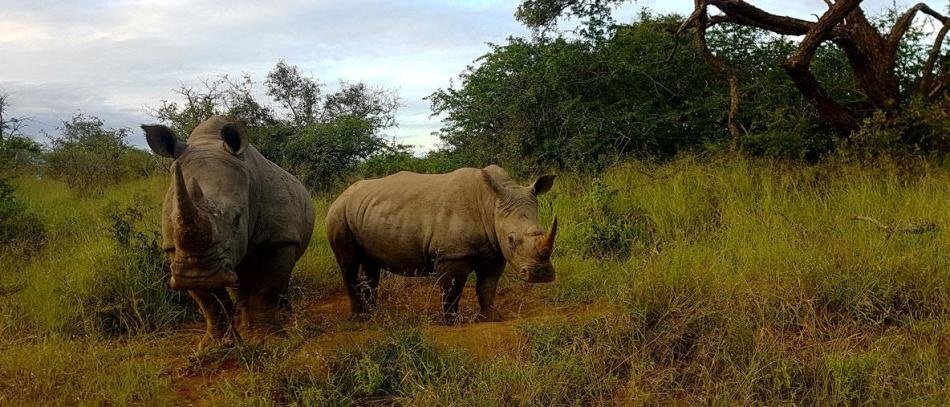Mar 13 2018
One of the major threats to biodiversity conservation is illegal wildlife trade. This is presently expanding to social media, which is a worrisome development, given the ease of access and universality of social media. Therefore, resourceful monitoring of illegal wildlife trade on social media is critical for conserving biodiversity.
 Southern white rhinoceros (Ceratotherium simum simum) in an undisclosed protected area in South Africa (Image credit: ENRICO DI MININ)
Southern white rhinoceros (Ceratotherium simum simum) in an undisclosed protected area in South Africa (Image credit: ENRICO DI MININ)
In a new article published in the Conservation Biology journal, researchers from the University of Helsinki, Digital Geography Lab, debate that techniques from artificial intelligence (AI) can be applied to help monitor the unlawful wildlife trade on social media.
Tools for Conserving Biodiversity
Dr. Enrico Di Minin, a conservation scientist at the University of Helsinki, who leads an interdisciplinary research group where techniques from AI are being developed and used to scrutinize the supply chain of the unlawful wildlife trade in a pioneering and innovative way, stresses the significance of such novel approaches to identify appropriate data on the prohibited wildlife trade from social media platforms.
Currently, the lack of tools for efficient monitoring of high-volume social media data limits the capability of law enforcement agencies to curb illegal wildlife trade.
Processing such data manually is inefficient and time-consuming, but methods from artificial intelligence, such as machine-learning algorithms, can be used to automatically identify relevant information. Despite their potential, approaches from artificial intelligence are still rarely used in addressing the biodiversity crisis.
Dr. Enrico Di Minin
Images, Metadata, and Meaning of a Sentences
A number of social media platforms offer an application programming interface that allows scientists to access user-generated text, videos, and images as well as the associated metadata, such as when and where the content was uploaded, and networks between the users.
MSc Christoph Fink emphasizes how machine learning techniques offer an efficient means of tracking illegal wildlife trade on social media.
Machine learning algorithms can be trained to detect which species or wildlife products, such as rhino horns, appear in an image or video contained in social media posts, while also classifying their setting, such as a natural habitat or a marketplace.
Christoph Fink
Assistant professor Tuomo Hiippala showcases how machine learning approaches can be applied to process the language of social media posts.
Natural language processing can be used to infer the meaning of a sentence and to classify the sentiment of social media users towards illegal wildlife trade. Most importantly, machine learning algorithms can process combinations of verbal, visual and audio-visual content.
Tuomo Hiippala
In the ongoing project, the team will be applying machine learning techniques to automatically identify content relating to unlawful wildlife trade on social media. They also stress the importance of partnering with law enforcement agencies and social media companies to additionally improve the results of their work and help end illegal wildlife trade on social media.
Reference: Investigating illegal wildlife trade on social media using machine learning: Di Minin, E., Fink, C. A., Hiippala, T. & Tenkanen, H. T. O. 2018. Conservation Biology. Article DOI: 10.1111/cobi.13104. Internal Article ID: 15162111